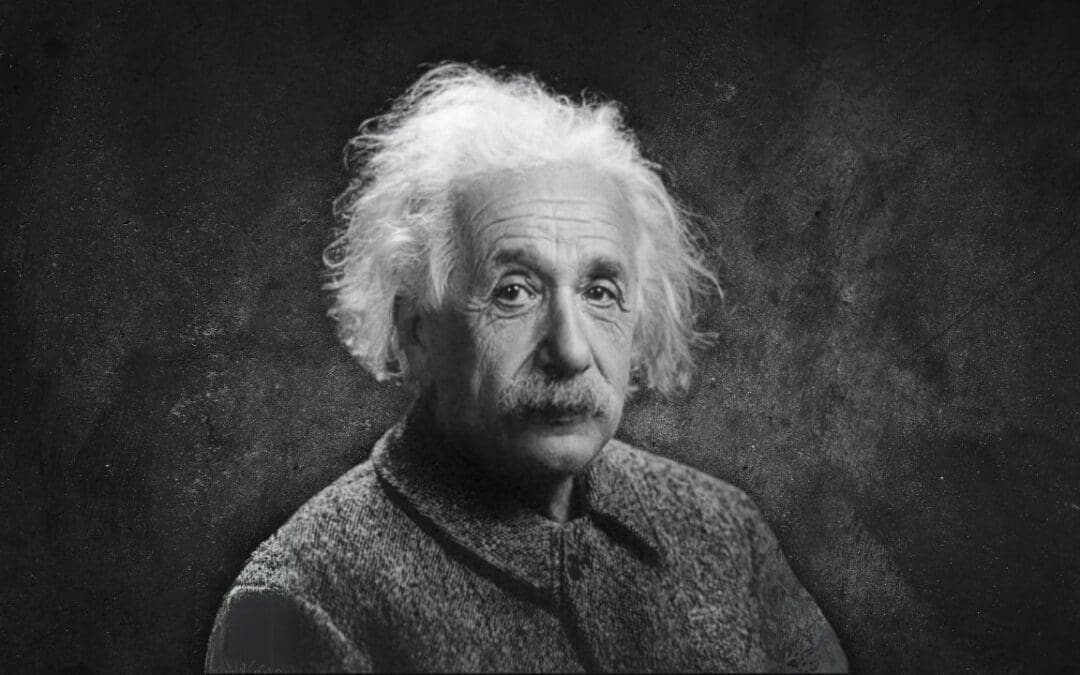
by Lawrence Wittner | Sep 18, 2024 | Global Justice
Are the nations of the world doomed to go on fighting the brutal, horrifying wars that have long characterized human history?
We might well wonder about that as we watch, aghast, while Israeli armed forces slaughter thousands of Palestinian civilians, Russian military might relentlessly pounds Ukrainian towns and cities into rubble, and new, bloody wars erupt in numerous other lands.
Why does such widespread destruction and human suffering persist in the modern, ostensibly “civilized,” world?
A variety of explanations have been advanced. Some observers point to capitalism, others blame dictatorial rule, while still others place the onus on xenophobia, religious differences, racism, and toxic masculinity.
Each of these factors has some weight. Certainly greed, authoritarian arrogance, inflamed nationalism, religious and racial animosities, and male violence have played some role in dividing people and, thereby, fostering wars among them over the course of history.
But are these factors sufficient to explain the stubborn persistence of war? After all, wars existed long before the advent of capitalism and, furthermore, since then, non-capitalist (for example, Communist) nations have repeatedly waged wars, even against one another. Similarly, democratic nations have plunged regularly into numerous wars, some against their fellow democracies. Moreover, even countries whose populations have friendly ties, have the same racial composition and religion, and have taken major strides toward gender equality (including admission of women to the armed forces and top posts in government) seem quite willing to prepare for and engage in war with each other.
Something is clearly missing from these explanations of widespread international violence―something fundamental. Could it be the structure of international relations?
International relations specialists have long argued that the driving force behind international war is global anarchy. Humanity, like war, has existed for thousands of years. But, although humans have gradually created governments to establish effective laws regulating behavior within their territories―regions, cities, states, and, ultimately, nations―they have failed to do so for the world. Thus, on the global level, nations have been left largely to their own devices. The resulting situation resembles the American Wild West, characterized by the absence of law enforcement and the prevalence of heavily armed gangs.
For centuries, scholars have pointed to the need for creating transnational structures to end this global nightmare. The theologian and diplomat Hugo Grotius helped develop the concept of international law, while writers such as Dante Alighieri, Immanuel Kant, and H.G. Wells promoted the idea of global governance.
After the atomic bombing of Japan and the ensuing scramble for nuclear weapons starkly revealed the peril of nuclear annihilation, the call for a full-scale transformation of international relations became even sharper. Albert Einstein, the chair of the Emergency Committee of Atomic Scientists, stated bluntly: “Mankind’s desire for peace can be realized only by the creation of a world government.”
Norman Cousins, editor of one of America’s major magazines of the era (the Saturday Review), played a key role in channeling Einstein’s call into a postwar campaign for a global federation of nations. “The only security for Americans today, or for any people,” Cousins contended, is “a system of world order that enables nations to retain sovereignty over their own cultures and institutions but that creates a workable authority for regulating the behavior of nations in their relationships with one another.” Cousins served as president of United World Federalists (which morphed into the World Federalist Association and, eventually, Citizens for Global Solutions), the U.S. member organization of the World Federalist Movement.
Benjamin Ferencz, the U.S. prosecutor at the Nuremberg War Crimes Trials of the late 1940s, became an important popularizer of this world federalist approach. In his widely-read book, PlanetHood, Ferencz told Americans that, in the United States, “we have four layers of government: city, county, state, and national,” created “to avoid anarchy within our nation.” Thus, adding “one more layer of government will enable us to have an abundant future on this planet.” Indeed, “international governance―something like a United Nations of the World―will rescue us from our deadly predicament.”
Critics, of course, might argue that a United Nations already exists, and has often proved unable to prevent the recurrence of war. But Ferencz’s answer―and, usually, the answer of the world federalist movement―was that, although the United Nations had significant accomplishments to its credit, the UN Charter “was deliberately made weak” by the major powers. As a result, it “did not give the United Nations the binding strength needed to get rid of international lawlessness.” Ultimately, “the only way to permanently solve the problem of war is to replace the Law of Force with the Force of Law.” This perspective led, in recent years, to the establishment of the LAW not War campaign, designed to promote the universality of the International Court of Justice.
World federalists can also point to a dramatic decline in war when independent nations accepted limitations on their sovereignty. In the late eighteenth century, as 13 British North American colonies gained their independence, they could have followed the usual global pattern of war with one another. But, instead, they gradually created a federal union (the United States) and fought only one war within their ranks during the following 235 years. Similarly, although European nations had undergone centuries of war with each other before they went at it again in World War II, members of the European Union, formed in the aftermath of that devastating war (and now encompassing 27 nations), succeeded in ending war among them.
The issue of transcending the ages-old practice of international war certainly remains relevant today. Indeed, the United Nations is moving forward with plans for a Summit of the Future in late September. Designed to address “global governance,” among other issues, the Summit provides yet another opportunity for nations to empower the world organization to maintain international peace through the enforcement of world law.
Is that goal realistic? Perhaps so, perhaps not. But how realistic is it to continue the anarchy of nations, which today threatens universal death and destruction?
Image source: https://www.asymmetricalhaircuts.com/episodes/in-memoriam-benjamin-b-ferencz/

by Lawrence Wittner | Aug 8, 2024 | Peace
Although the current U.S. presidential campaign has focused almost entirely on domestic issues, Americans live on a planet engulfed in horrific wars, an escalating arms race, and repeated threats of nuclear annihilation. Amid this dangerous reality, shouldn’t we give some thought to how to build a more peaceful future?
Back in 1945, toward the end of the most devastating war in history, the world’s badly battered nations, many of them in smoldering ruins, agreed to create the United Nations, with a mandate to “maintain international peace and security.”
It was not only a relevant idea, but one that seemed to have a lot of potential. The new UN General Assembly would provide membership and a voice for the world’s far-flung nations, while the new UN Security Council would assume the responsibility for enforcing peace. Furthermore, the venerable International Court of Justice (better known as the World Court) would issue judgments on disputes among nations. And the International Criminal Court―envisioned at the time but created nearly four decades later―would try individuals for crimes of genocide, crimes against humanity, war crimes, and crimes of aggression. It almost seemed as if a chaotic, ungovernable, and bloodthirsty pack of feuding nations had finally evolved into the long-standing dream of “One World.”
But, as things turned out, the celebration was premature.
The good news is that, in some ways, the new arrangement for global governance actually worked. UN action did, at times, prevent or end wars, reduce international conflict, and provide a forum for discussion and action by the world community. Thanks to UN decolonization policies, nearly all colonized peoples emerged from imperial subjugation to form new nations, assisted by international aid for economic and social development. A Universal Declaration of Human Rights, adopted in 1948, set vastly-improved human rights standards for people around the world. UN entities swung into action to address new global challenges in connection with public health, poverty, and climate change.
Even so, despite the benefits produced by the United Nations, this pioneering international organization sometimes fell short of expectations, particularly when it came to securing peace. Tragically, much international conflict persisted, bringing with it costly arms races, devastating wars, and massive destruction. To some degree, this persistent conflict reflected ancient hatreds that people proved unable to overcome and that unscrupulous demagogues worked successfully to inflame.
But there were also structural reasons for ongoing international conflict. In a world without effective enforcement of international law, large, powerful nations could continue to lord it over smaller, weaker nations. Thus, the rulers of these large, powerful nations (plus a portion of their citizenry) were often reluctant to surrender this privileged status.
Symptomatically, the five victorious great powers of 1945 (the United States, the Soviet Union, Britain, France, and China) insisted that their participation in the United Nations hinged upon their receiving permanent seats in the new UN Security Council, including a veto enabling them to block Security Council actions not to their liking. Over the ensuing decades, they used the veto hundreds of times to stymie UN efforts to maintain international peace and security.
Similarly, the nine nuclear nations (including these five great powers) refused to sign the 2017 Treaty on the Prohibition of Nuclear Weapons, which has been endorsed by the overwhelming majority of the world’s nations. Behind their resistance to creating a nuclear weapons-free world lies a belief that there is much to lose by giving up the status and power that nuclear weapons afford them.
Of course, from the standpoint of building a peaceful world, this is a very short-sighted position, and the reckless behavior and nuclear arrogance of the powerful have led, at times, to massive opposition by peace and nuclear disarmament movements, as well as by many smaller, more peacefully-inclined nations.
Thanks to this resistance and to a widespread desire for peace, possibilities do exist for overcoming UN paralysis on numerous matters of international security. Unfortunately, it would be very difficult to abolish the Security Council veto outright, given the fact that, under the UN Charter, the five permanent members have the power to veto that action, as well. But Article 27(3) of the Charter does provide that nations party to a dispute before the Council must abstain from voting on that issue―a provision that provides a means to circumvent the veto. In addition, 124 UN nations have endorsed a proposal to scrap the veto in connection with genocide, crimes against humanity, and mass atrocities, while the UN General Assembly has previously used “Uniting for Peace” resolutions to act on peace and security issues when the Security Council has evaded its responsibility to do so.
Global governance could also be improved through other measures. They include increasing the number of nations accepting the compulsory jurisdiction of the International Court of Justice and securing wider ratification of the founding statute of the International Criminal Court (which has yet to be ratified by Russia, the United States, China, India, and other self-appointed guardians of the world’s future).
It won’t be easy, of course, to replace the law of force with the force of law. Only this May, the prosecutor of the International Criminal Court took a bold step toward strengthening international norms by announcing that he was seeking arrest warrants for top Israeli officials and Hamas commanders for crimes in and around Gaza. In response, the Republican-controlled U.S. House of Representatives passed the “Illegitimate Court Counteraction Act,” legislation requiring the U.S. executive to impose sanctions on individuals connected with the ICC.
Despite the nationalist backlash, however, the time has arrived to consider bolstering international institutions that can build a more peaceful world. And the current U.S. presidential campaign provides an appropriate place for raising this issue. After all, Americans, like the people of other lands, have a personal stake in ensuring human survival.

by Lawrence Wittner | Jun 18, 2024 | Peace
International law―the recognized rules of behavior among nations based on customary practices and treaties, among them the United Nations Charter and the Universal Declaration of Human Rights―has been agreed upon by large and small nations alike. To implement this law, the nations of the world have established a UN Security Council (to maintain international peace and security) and a variety of international courts, including the UN’s International Court of Justice (which adjudicates disputes between nations and gives advisory opinions on international legal issues) and the International Criminal Court (which prosecutes individuals for crimes of genocide, crimes against humanity, war crimes, and the crime of aggression).
Yet nations continue to defy international law.
In the ongoing Gaza crisis, the Israeli government has failed to uphold international law by rebuffing the calls of international organizations to end its massive slaughter of Palestinian civilians. The U.S. government has facilitated this behavior by vetoing three UN Security Council resolutions calling for a ceasefire, while the Israeli government has ignored an International Court of Justice ruling that it should head off genocide in Gaza by ensuring sufficient humanitarian assistance to the Palestinian population. The Israeli government has also refused to honor an order by the International Court of Justice to halt its offensive in Rafah and denounced the International Criminal Court’s request for arrest warrants for its top officials.
Russia’s military assault upon Ukraine provides another example of flouting international law. Given the UN Charter’s prohibition of the “use of force against the territorial integrity or political independence of any state,” when Russian military forces seized and annexed Crimea and commenced military operations to gobble up eastern Ukraine in early 2014, the issue came before the UN Security Council, where condemnation of Russia’s action was promptly vetoed by Russia. Similarly, in February 2022, when the Russian government commenced a full-scale invasion of Ukraine, Russia again vetoed Security Council action. That March, the International Court of Justice, by an overwhelming vote, ordered Russia to halt its invasion of Ukraine—but, as usual, to no avail.
Unfortunately, these violations of international law are not unusual for, over many decades, numerous nations have ignored the recognized rules of international conduct.
What is lacking is not international law but, rather, its consistent and universal enforcement. For decades, the five permanent members of the UN Security Council (the United States, Russia, China, Britain, and France) have repeatedly used their veto power in that entity to block UN action to maintain international peace and security. Furthermore, nearly two-thirds of the world’s nations do not accept the compulsory jurisdiction of the International Court of Justice, while more than a third of the world’s nations (including some of the largest, such as Russia, the United States, China, and India) have resisted becoming parties to the International Criminal Court. Indeed, responding to the International Criminal Court’s request for arrest warrants for Israeli officials, the U.S. House of Representatives promptly passed legislation to sanction that international organization.
Despite such obstacles, these international organizations have sometimes played very useful roles in resolving international disputes. The UN Security Council has dispatched numerous peacekeeping missions around the world―including 60 alone in the years since the dissolution of the Soviet Union―that have helped defuse crises in conflict-ridden regions.
For its part, the International Court of Justice (ICJ) paved the way for the Central American Peace Accords during the 1980s through its ruling in Nicaragua v United States, while its ruling in the Nuclear Tests case helped bring an end to nuclear weapons testing in the Pacific. In addition, the ICJ’s ruling in Chad v Libya resolved a territorial dispute between these two nations and ended their military conflict.
Although the International Criminal Court has only been in operation since 2002, it has thus far convicted ten individuals of heinous crimes, issued or requested warrants for the arrest of prominent figures charged with war crimes (including Vladimir Putin, Benjamin Netanyahu, and the leaders of Hamas), and conducted or begun investigations of yet other notorious individuals.
But, of course, as demonstrated by the persistence of wars of aggression and massive violations of human rights, enforcing international law remains a major problem in the contemporary world.
Therefore, if the world is to move beyond national impunity―if it is finally to scrap the long and disgraceful tradition among nations of might makes right―it is necessary to empower the world’s major international organizations to enforce the international law that nations have agreed to respect.
This strengthening of global governance is certainly possible.
Although provisions in the UN Charter make outright abolition of the UN Security Council veto very difficult, other means are available for reducing the veto’s baneful effects. In many cases ―including those of the Ukraine and Gaza conflicts―simply invoking Article 27(3) of the UN Charter would be sufficient, for it states that a party to a dispute before the Security Council shall abstain from voting in connection with that dispute. Furthermore, 124 UN nations have already endorsed a proposal for renunciation of the veto when taking action against genocide, crimes against humanity, and mass atrocities. Moreover, the UN General Assembly has occasionally employed “Uniting for Peace” resolutions to take action when the Security Council has failed to do so.
Improving the effectiveness of the international judicial system has also generated attention in recent years. The LAW Not War campaign, championed by organizations dedicated to improving global governance, advocates strengthening the International Court of Justice, principally by increasing the number of nations accepting the compulsory jurisdiction of the Court. Similarly, the Coalition for the International Criminal Court, representing numerous organizations, calls on all nations to ratify the Court’s founding statute and, thereby, “expand the Court’s reach and reduce the impunity gap.”
National impunity is not inevitable, at least if people and governments of the world are willing to take the necessary actions. Are they? Or will they continue talking of a “rules-based international order” while they avoid enforcing the rules?
Image source: International Court of Justice; originally uploaded by Yeu Ninje at en.wikipedia., Public domain, via Wikimedia Commons.

by Lawrence Wittner | May 2, 2024 | Disarmament
What will it take to end the nuclear nightmare that has gripped the world since the atomic bombings of 1945?
For a time, that nightmare seemed to have abated for, in response to massive popular resistance to the prospect of nuclear war, governments turned to signing nuclear arms control and disarmament agreements. Even previously hawkish government officials proclaimed that “a nuclear war cannot be won and must never be fought.”
In recent decades, however, nuclear-armed nations have scrapped nuclear arms control and disarmament treaties, begun the massive upgrading and expansion of their nuclear arsenals, and publicly threatened other nations with nuclear war. The Bulletin of the Atomic Scientists, which has assessed the nuclear situation since 1946, has turned the hands of its “Doomsday Clock” to 90 seconds to midnight, the most dangerous setting in its history.
Why has this renewed flirtation with nuclear Armageddon occurred?
One reason for the nuclear revival is that, in a world of independent, feuding nations, governments turn naturally to arming themselves with the most powerful weapons available and, sometimes, to war. Thus, with the decline of the worldwide nuclear disarmament campaign of the 1980s, governments have felt freer to engage their natural proclivities.
A second, less apparent reason is that the movement and government officials alike have ceased thinking systemically. Or, to put it another way, they have forgotten that the motor force behind nations’ reliance upon nuclear weapons is international anarchy.
In the late 1940s, during the first wave of the popular campaign against the Bomb, the movement recognized that nuclear weapons grew out of the centuries-old conflicts among nations. Consequently, millions of people across the globe, shocked by the atomic bombings of 1945, rallied around the slogan “One World or None.”
In the United States, Norman Cousins, the young editor of the Saturday Review of Literature, sat down on the evening of the destruction of Hiroshima and wrote a lengthy editorial, “Modern Man Is Obsolete.” The “need for world government was clear long before August 6, 1945,” he observed, but the atomic bombing “raised the need to such dimensions that it can no longer be ignored.” Becoming a key writer, speaker, and fundraiser for the cause, Cousins turned the editorial into a book that went through 14 editions, appeared in seven languages, and had a circulation in the United States of seven million copies. He also became a leader in a new, rapidly-growing organization, United World Federalists, which by mid-1949 had 720 chapters and nearly 50,000 members.
Around the world, the atomic bombing provoked a similar response. Atomic scientists, horrified by the prospect of worldwide destruction, published a book titled One World or None, organized international antinuclear campaigns among scientists, and emphasized the need for a global solution to the nuclear problem. Many, like Albert Einstein, became prominent world federalists or, like Robert Oppenheimer, viewed international control of nuclear weapons as a task that necessitated overriding national sovereignty.
The antinuclear uprising of the late 1940s had some impact upon public policy. Major governments, previously enthusiastic about nuclear weapons, grew ambivalent about their development and use. Indeed, the appearance of the Baruch Plan, the world’s first serious nuclear disarmament proposal, owed much to the postwar agitation.
Nevertheless, as the Cold War emerged, the officials of the great powers rejected the new way of thinking about relations among nations championed by Einstein and other activists. Instead of restructuring international relations to cope with the unprecedented peril of the Bomb, they incorporated the Bomb into the traditional framework of international conflict. The result was a nuclear arms race and a growing sense that agitation for transforming the international order was, at best, naïve, or, at worst, subversive.
These narrowed political horizons meant that, when the antinuclear movement revived in the late 1950s, it championed more limited objectives, beginning with a call for ending nuclear testing. And this goal proved attainable, at least in part, because halting atmospheric nuclear testing did not seriously hinder the great powers, which could move tests underground and, thereby, upgrade their nuclear arsenals. The result was the passage of the world’s first nuclear arms control agreement, the Partial Test Ban Treaty of 1963.
Admittedly, ban-the-bomb movements also sprang up in numerous countries. But, although they were sometimes headed by long-time proponents of world government, including Norman Cousins (chair of America’s National Committee for a Sane Nuclear Policy) and Bertrand Russell (president of Britain’s Campaign for Nuclear Disarmament), they, too, focused on weapons rather than on reforming the international system. The result was a welcome surge of nuclear arms control treaties in the late 1960s and early 1970s that quieted the fears of activists and led to the movement’s decline.
When the Cold War revived in the late 1970s and early 1980s, so did an outraged antinuclear campaign. Indeed, this third wave of the nuclear disarmament movement proved the largest and most successful yet, securing substantial decreases in nuclear arsenals and significantly reducing the danger of nuclear war.
Of all the major actors of that era, though, only Mikhail Gorbachev seemed ready to move beyond weapons cutbacks to advocate the development of a new international security system. But with the disintegration of the Soviet Union, Gorbachev was swept from power. And, in recent decades, rising international tensions have swept away the antinuclear campaign’s hard-won gains, as well.
Those gains, though evanescent, were important, for they helped the world to avoid nuclear war while giving it time to press on toward a nuclear weapons-free future.
But this history also suggests that, in the struggle for survival in the nuclear age, confronting the continued anarchy of nations cannot be avoided. Indeed, given the severity of our current international crises and the escalating nuclear menace that they generate, the time has come to revisit the forgotten issue of strengthening the international security system.

by Lawrence Wittner | Mar 2, 2024 | Disarmament
Although the popular new Netflix film, Einstein and the Bomb, purports to tell the story of the great physicist’s relationship to nuclear weapons, it ignores his vital role in rallying the world against nuclear catastrophe.
Aghast at the use of nuclear weapons in August 1945 to obliterate the cities of Hiroshima and Nagasaki, Einstein threw himself into efforts to prevent worldwide nuclear annihilation. In September, responding to a letter from Robert Hutchins, Chancellor of the University of Chicago, about nuclear weapons, Einstein contended that, “as long as nations demand unrestricted sovereignty, we shall undoubtedly be faced with still bigger wars, fought with bigger and technologically more advanced weapons.” Thus, “the most important task of intellectuals is to make this clear to the general public and to emphasize over and over again the need to establish a well-organized world government.” Four days later, he made the same point to an interviewer, insisting that “the only salvation for civilization and the human race lies in the creation of a world government, with security of nations founded upon law.”
Determined to prevent nuclear war, Einstein repeatedly hammered away at the need to replace international anarchy with a federation of nations operating under international law. In October 1945, together with other prominent Americans (among them Senator J. William Fulbright, Supreme Court Justice Owen Roberts, and novelist Thomas Mann), Einstein called for a “Federal Constitution of the World.” That November, he returned to this theme in an interview published in the Atlantic Monthly. “The release of atomic energy has not created a new problem,” he said. “It has merely made more urgent the necessity of solving an existing one. . . . As long as there are sovereign nations possessing great power, war is inevitable.” And war, sooner or later, would become nuclear war.
After the creation, in early 1947, of United World Federalists, the U.S. branch of the growing world federalist movement, Einstein served on its Advisory Board.
Einstein also promoted world federalist ideas through a burgeoning atomic scientists’ movement in which he played a central role. To bring the full significance of the atomic bomb to the public, the newly-formed Federation of American Scientists put together an inexpensive paperback, One World or None, with individual essays by prominent Americans. In his contribution to the book, Einstein wrote that he was “convinced there is only one way out” and this necessitated creating “a supranational organization” to “make it impossible for any country to wage war.” This hard-hitting book, which first appeared in early 1946, sold more than 100,000 copies.
Given Einstein’s fame and his well-publicized efforts to avert a nuclear holocaust, in May 1946 he became chair of the newly-formed Emergency Committee of Atomic Scientists, a fundraising and policymaking arm for the atomic scientists’ movement. In the Committee’s first fund appeal, Einstein warned that “the unleashed power of the atom has changed everything save our modes of thinking, and thus we drift toward unparalleled catastrophe.”
Even so, despite the fact that Einstein, like most members of the early atomic scientists’ movement, saw world government as the best recipe for survival in the nuclear age, there seemed good reason to consider shorter-range objectives. After all, the Cold War was emerging and nations were beginning to formulate nuclear policies. An early Atomic Scientists of Chicago statement, prepared by Eugene Rabinowitch, editor of the Bulletin of the Atomic Scientists, underscored practical considerations. “Since world government is unlikely to be achieved within the short time available before the atomic armaments race will lead to an acute danger of armed conflict,” it noted, “the establishment of international controls must be considered as a problem of immediate urgency.” Consequently, the movement increasingly worked in support of specific nuclear arms control and disarmament measures.
In the context of the heightening Cold War, however, taking even limited steps forward proved impossible. The Russian government sharply rejected the Baruch Plan for international control of atomic energy and, instead, developed its own atomic arsenal. In turn, U.S. President Harry Truman, in February 1950, announced his decision to develop a hydrogen bomb―a weapon a thousand times as powerful as its predecessor. Naturally, the atomic scientists were deeply disturbed by this lurch toward disaster. Appearing on television, Einstein called once more for the creation of a “supra-national” government as the only “way out of the impasse.” Until then, he declared, “annihilation beckons.”
Despite the dashing of his hopes for postwar action to end the nuclear menace, Einstein lent his support over the following years to peace, nuclear disarmament, and world government projects.
The most important of these ventures occurred in 1955, when Bertrand Russell, like Einstein, a proponent of world federation, conceived the idea of issuing a public statement by a small group of the world’s most eminent scientists about the existential peril nuclear weapons brought to modern war. Asked by Russell for his support, Einstein was delighted to sign the statement and did so in one of his last actions before his death that April. In July, Russell presented the statement to a large meeting in London, packed with representatives of the mass communications media. In the shadow of the Bomb, it read, “we have to learn to think in a new way. . . . Shall we . . . choose death because we cannot forget our quarrels? We appeal as human beings to human beings: Remember your humanity, and forget the rest.”
This Russell-Einstein Manifesto, as it became known, helped trigger a remarkable worldwide uprising against nuclear weapons in the late 1950s and early 1960s, culminating in the world’s first significant nuclear arms control measures. Furthermore, in later years, it inspired legions of activists and world leaders. Among them was the Soviet Union’s Mikhail Gorbachev, whose “new thinking,” modeled on the Manifesto, brought a dramatic end to the Cold War and fostered substantial nuclear disarmament.
The Manifesto thus provided an appropriate conclusion to Einstein’s unremitting campaign to save the world from nuclear destruction.
Image courtesy of US Govt. Defense Threat Reduction Agency, Public domain, via Wikimedia Commons




































